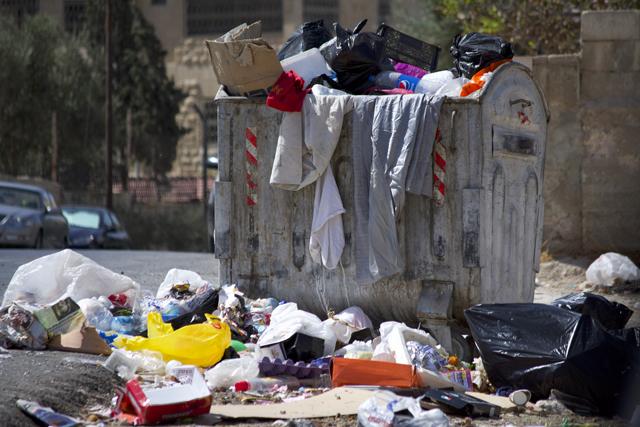You are here
‘State of the art’ weighbridge to be built at Ghabawi landfill
By Hana Namrouqa - Nov 04,2018 - Last updated at Nov 04,2018

The administration building, which is under construction, will facilitate the Ghabawi landfill’s operational and administrative procedures, according to GAM (Photo courtesy of GAM)
AMMAN — The Greater Amman Municipality (GAM) is planning to install a second “state-of-the-art weighbridge” in the Ghabawi landfill to cope with the increasing amount of waste reaching the dumpsite, GAM officials said on Saturday.
The planned installation is a part of the measures the municipality is undertaking to prepare the Ghabawi landfill to become a source of power generation by burning methane produced at the landfill, according to GAM Media Office Director Mazen Farajin.
In addition to the planned installation of the weighbridge, GAM is now establishing an administrative building at the landfill to facilitate the site’s operational and administrative procedures.
“Twenty seven per cent of the landfill’s administration building has been completed. Walls and cameras monitoring systems will also be installed at the site,” GAM Engineering Executive Nimeh Qatanani said.
The municipality is in the process of preparing a tender for the installation of the weighbridge, which will be established at the site, in addition to an existing weighbridge, to cope with the mounting pressure put on landfill and to weigh waste trucks on entry and exit of the site, Qatanani noted.
Farajin highlighted that weighbridges at landfills provide accurate recording of waste inputs and allow accurate verification and calculations of returns when the site becomes energy producing.
Generating power from the Ghabawi landfill is a megaproject which commenced in 2003 and is slated to be completed in 2027. The project will start generating five megawatts per hour early next year; by burning methane collected from waste, according to GAM.
The methane gas at the Ghabawi landfill, situated some 25 kilometres east of Amman, will be collected and burned to prevent it from being released into the air and harming the environment, while also using the collected biogas to generate electricity, GAM officials have said in previous statements to The Jordan Times, indicating that the municipality is scheduled to receive electricity-generating engines that run on biogas later this year as it finalises preparations to produce power.
The project includes nine cells. Work on the project will conclude when all the cells are completed by 2027, according to GAM.
Work on the fifth cell, with a capacity to hold 5 million tonnes of waste, was completed recently, according to Qatanani, who said that the cell can cope with the capital’s waste generated over the next three years.
GAM has already installed generators and integrated systems for generating electricity by burning methane and using wells, which collect methane emitted from municipal waste dumped at the Ghabawi landfill. The daily waste at the landfill stands at an average of 4,300 tonnes.
The amount of methane gas produced at the landfill and ultimately burned for power generation depends on the amount of dumped waste, according to GAM, which said that the landfill has the capacity to produce more than 5 megawatts per hour.
Methane gas produced at landfills is a strong contributor to global climate change, GAM officials said, indicating that it has 21 times the negative impact of carbon dioxide on the atmosphere.
The generated electricity will be used to power the landfill, while the remainder will be sent back to the national grid, according to GAM, which said that its annual electricity bill had reached JD11 million.
The landfill serves the capital and the central region, stretching over 3,000 square metres. It receives 1.3 million tonnes of waste annually and is expected to remain in operation beyond 2030, according to GAM.
Related Articles
AMMAN — The Greater Amman Municipality (GAM) is scheduled to receive electricity-generating engines that run on biogas later this year as it
AMMAN — The Greater Amman Municipality (GAM) will soon start implementing the third phase of a project to generate electricity by burning me
AMMAN — The Greater Amman Municipality (GAM) said on Saturday that the Ghabawi landfill will start generating 5 megawatts per hour (MWh) as


















